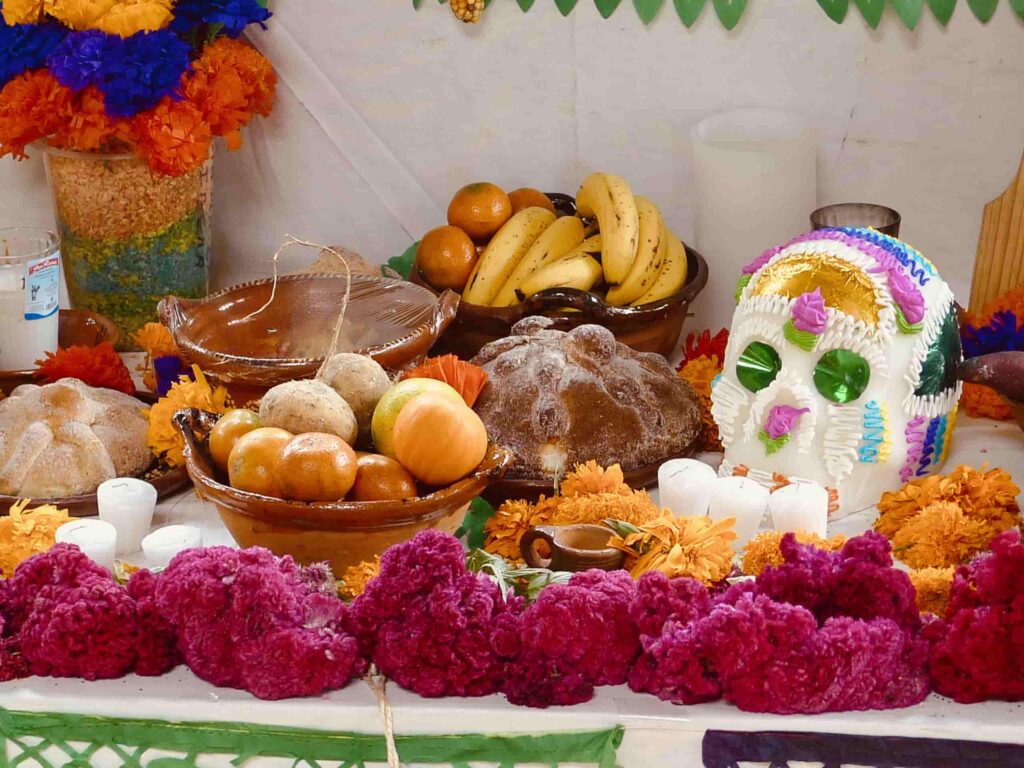Day of the Dead: An Invitation to Reimagine Death

A Window into Mexican Culture
November 1st and 2nd on the mainland and southern regions of Mexico with deep pre-Columbian Mesoamerican roots, Day of the Dead, Día de Muertos, is a widely celebrated and cherished holiday. It offers a meaningful opportunity to honor the departed and see death in a new light—one that is warm, colorful, and celebratory.
In Loreto, you’ll find that Halloween celebrations are more prominent, reflecting the influence of American traditions. Families in the northern part of the country, particularly in border areas may not celebrate Day of the Dead extensively, but still, it is a key part of the culture. In understanding it, you’ll not only connect more deeply with Mexican traditions but also gain perspective on life, loss, and remembrance.
A Celebration of Life and Legacy
One of the most beautiful aspects of Day of the Dead is how it redefines our relationship with death. It isn’t a time of sorrow or silence, but rather, a celebration of life and the continuity of memory. The holiday blends remembrance and joy, helping families come together to reflect on their loved ones while also sharing stories, food, and music. In this way, death is embraced lovingly—not as an end but as part of the cycle of life.
Instead of something to be feared or avoided, death is celebrated openly, offering a space for emotional healing. The stories exchanged during this time give younger generations a sense of belonging, the opportunity to learn about their family history and understand their place in the continuum of life.
Key Symbols of Day of the Dead
Several symbols, which can be found in the altars families create to honor the deceased, are emblematic of the festivities:
Pan de Muerto: A round sweet bread with crossbones, flavored with butter, sugar, a hint of orange and anís.
Cempasúchil (Marigold Flowers): Known as the “flower of the dead,” cempasúchil are believed to guide the spirits to their altars with their vibrant color
Calaveritas (Sugar Skulls): Colorful, intricately decorated skulls formed out of sugar.

How Day of the Dead is Celebrated
The atmosphere during Día de los Muertos is anything but somber. Rather than quiet mourning, families gather at cemeteries to clean off graves and celebrate their loved ones in a lively, joyful manner. You’ll see families sitting by graves, chatting, laughing, and sharing food. Barbecues and picnics are common as people come together to reminisce and enjoy each other’s company, often late into the night.
One of the most essential elements is the creation of altars (ofrendas) in family homes, which are beautifully decorated spaces dedicated to the deceased. These altars are adorned with photographs, favorite foods, candles, marigolds, and other meaningful items. Families often work together to build and maintain these altars, with everyone from the youngest to the oldest participating.

Disney Pixar’s Coco
Coco (2017) by Disney Pixar beautifully captures the Day of the Dead traditions and is a must-see. The animated film is a touching, visually stunning way to better understand the celebration and how Mexicans view death not as an end but as a continuation of love and connection.
Why Day of the Dead Matters—Even if You Don’t Celebrate It
If you find yourself in Loreto or any part of Mexico during Day of the Dead, take a moment to respectfully observe the altars, the flowers, and the families gathered in celebration. Understanding this holiday’s significance opens a window into the heart of Mexican culture. It’s an opportunity to reflect on your own relationship with death, legacy, and remembrance. The holiday teaches us that celebrating the lives of those we’ve lost doesn’t have to be filled with sorrow. Instead, it can be a time of joy, connection, and the preservation of memories.



